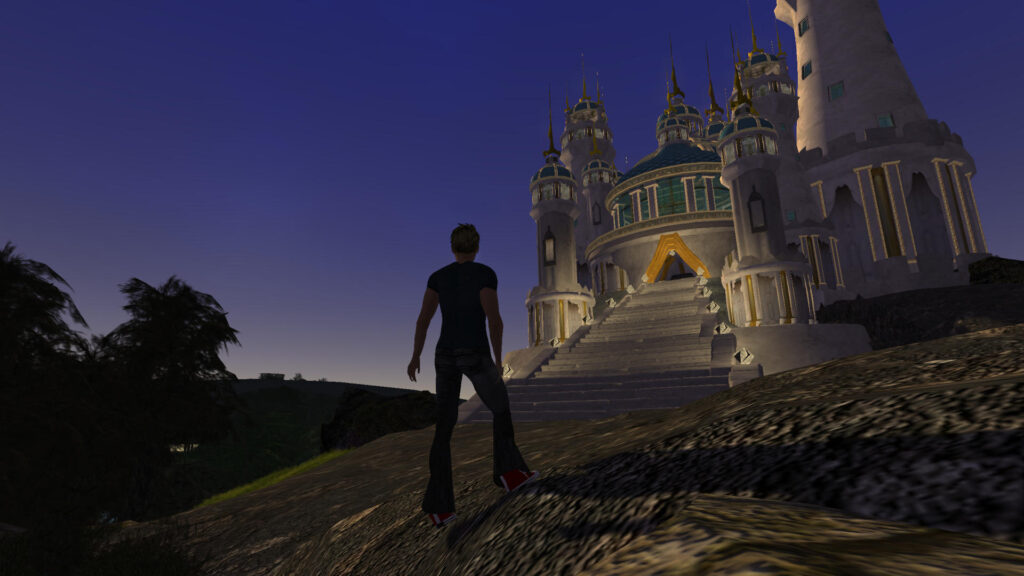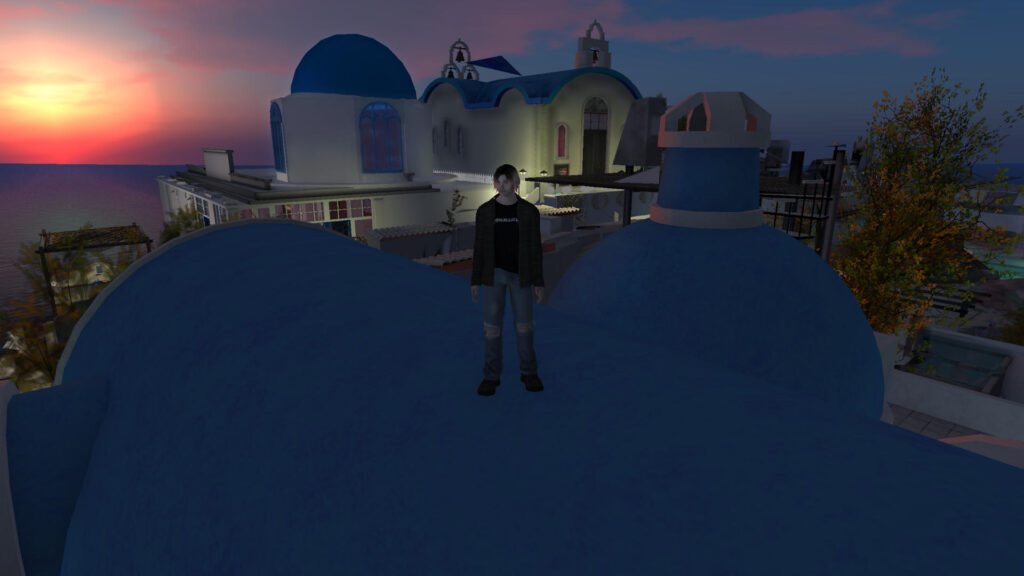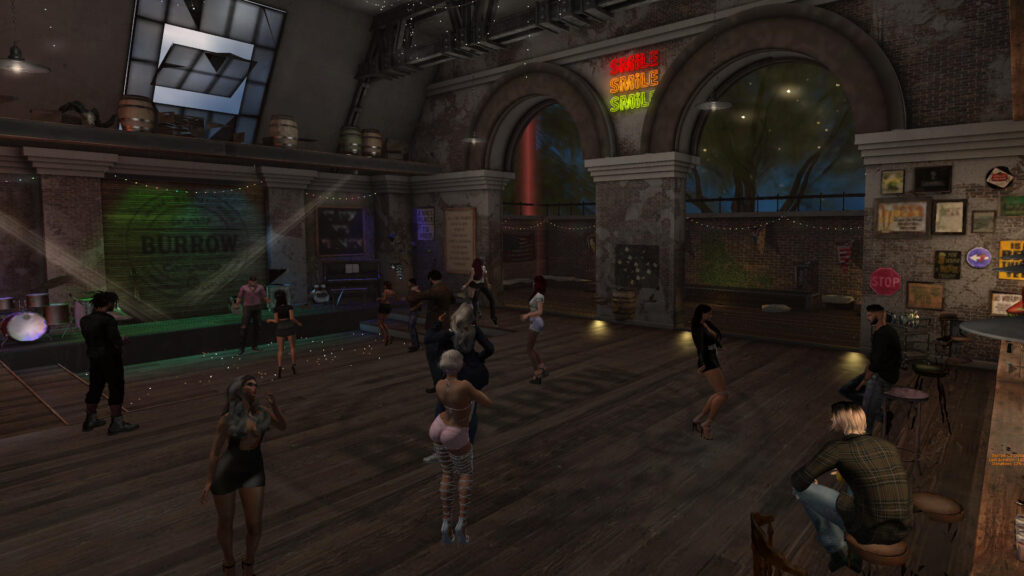
After more than six months of being stuck at home because Covid-19, I began to miss seeing open spaces and even other people. Until it’s safe to do that sort of thing in real life again, I thought I’d explore the state of online virtual worlds. I remember taking a brief tour of Second Life many years ago and, of course, I’m familiar with the classic representations of virtual worlds in novels like Snow Crash, Neuromancer, and Ready Player One. Even though I’m not much of a gamer, I’m aware there are many MMOs out there like Eve and WoW. But I’m more interested in exploring a world, possibly building things in it, and tinkering with the software.
I thought a good start would be to revisit Second Life to see what’s changed in the last 10 years. I was surprised to find there were no immediately noticeable differences. It seemed pretty revolutionary when I saw it in 2007 but it may be on its way to becoming a dinosaur today. Still, it’s reasonably nice-looking and seemed to be the most expansive, most populated virtual world I looked it. Land area is up to 1,636 square kilometers. There are around 900,000 active users, up from 700,000 before Covid-19 (so I’m clearly not the only one who had this idea). For exploring and meeting people it’s probably good.
The Second Life software is a mix of proprietary and open source. While the protocols and viewer are open source, the servers are proprietary. That’s a problem for me because I like to participate and improve projects that I get involved with. Also, proprietary platforms often lead to proprietary mindsets in the users and that seems to be the case with Second Life.
It’s a highly proprietary world full people who want to sell you stuff. Everything you might want to do is going to cost you money. Want a piece of real estate to play with building things on? It’ll cost you. Want to customize your avatar to look a bit more (or less) like yourself? It’ll cost you. Want to play a game, sail a boat, race a car? It’ll cost you. For my casual exploration, I didn’t really want to spend a lot of dollars in the process. So I moved on after a couple of days. But I think Second Life makes a good reference point as the most well-known virtual world.

The Second Life world is made up of square geographic segments called “regions”. Regions are joined together in the form of a large, rectangular grid. So the “world” is built on a sort of flat Earth model where the planet is a big, flat rectangle instead of a sphere. This is pretty much a super primitive version of the virtual world described in Neil Stephenson’s novel, Snow Crash. By default, everything is ocean but when you take over a region, you can make it anything you want: an island, a forest, mountains, a plain, an urban area, anything you want to design. This leads to interesting transitions if you’re exploring on foot as you walk through a forest and cross a perfectly straight boundary after which you’re in the middle of a downtown area. Since region owners can also control weather to an extent, you’ll run into contrasts you’d never see in real life. Snow covered, rolling hills will abruptly transition to rocky desert.

Many areas are almost devoid of other people but it’s easy to find crowds if you want to. Just look for bars and dance clubs. Second Lifers seem to enjoy dancing, and why not, it’s easy in a virtual world, no practice needed. Even I was able to dance better than I can in real life. Without a VR headset though, it begins to feel more like you’re just watching video game characters doing stuff rather than experiencing it yourself. Walking alone in some areas with first person view turned on, it was a little easier to get into the experience. Talking with other people is mostly done by text chat rather than voice, and that also breaks the feeling of a real experience.
The one thing in Second Life that did seem to be different than I remember from my decade old experience was the lack of creativity I saw. When it was new, everyone in Second Life seemed almost obsessive with the need for artistic experimentation. You’d see every kind of avatar you could imagine. Aliens, animals, robots, ghosts, even stranger things were common. There were weird and wonderful vehicles, landscapes, and events. Today things have settled down into a something a little less creative and more mundane.
Eventually, my desire to see the software behind things caught up with me and I moved on to other virtual worlds. The next two I looked at were OSgrid, a virtual world that relies on OpenSimulator, a free software/open source server, and Vircadia, an open source spin-off of software original developed by the High Fidelity VR company. I’ll take a look at one of those next time.
